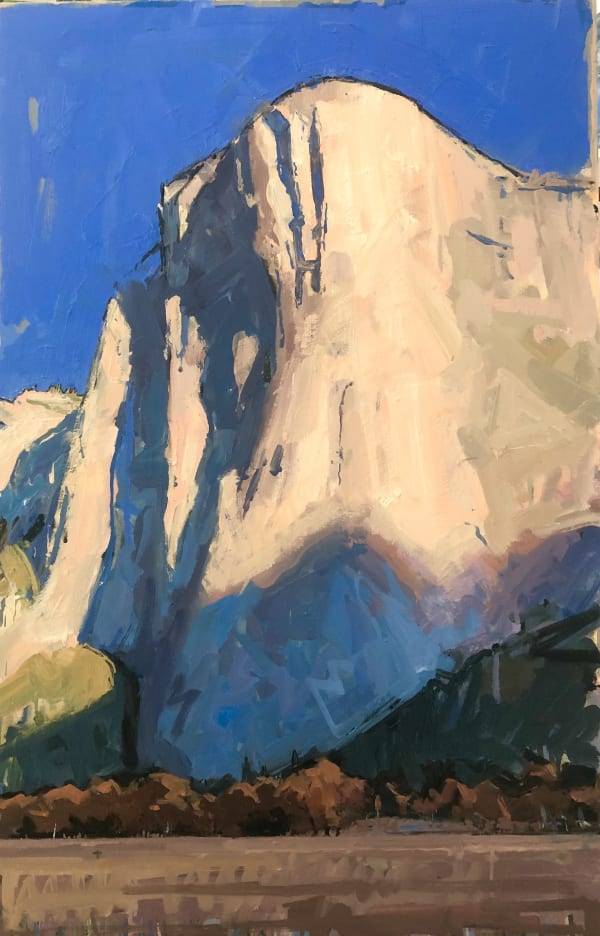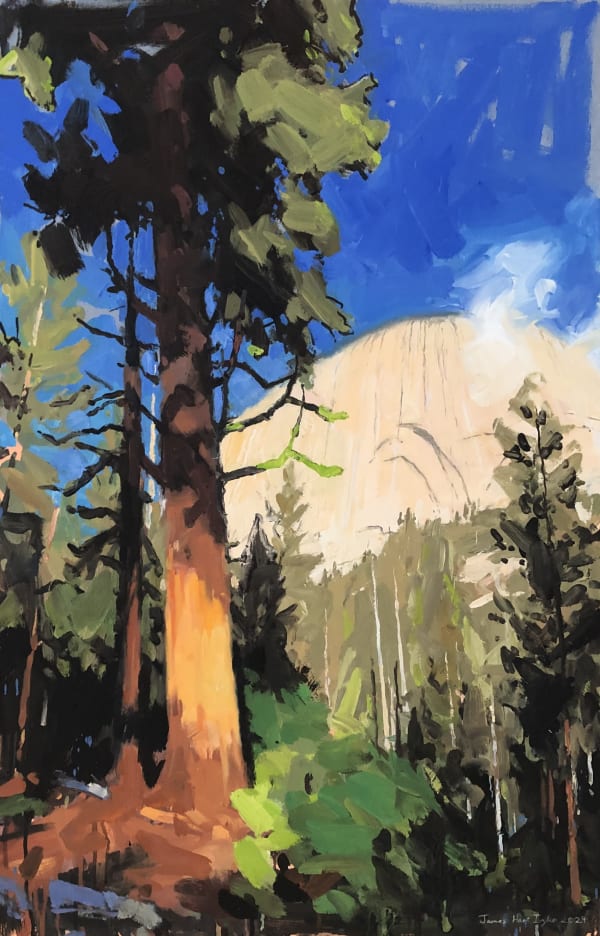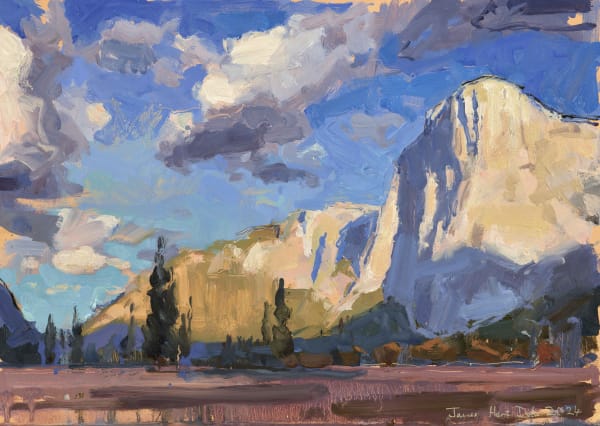‘There is a love of wild nature in everybody.’ John Muir (1838-1914)
In early November 2023, James Hart Dyke and I went to San Francisco to catch the last of the autumn weather window in Yosemite National Park.
In just under a week, James covered many miles and vertical feet to capture some of Yosemite’s magic en plein air. He managed to produce enough oil sketches from many vantage points on and above the valley floor to return with a body of work destined for an exhibition dedicated to Yosemite, a place which, in spite of its worldwide fame, has hardly changed since the great glaciologist and naturalist, John Muir, first visited the valley in 1868.
We were lucky to be accompanied by a renowned Californian mountain guide, Armin Fisher, as neither James nor I had ever set foot there.
Situated in east-central California, Yosemite National Park covers a gigantic area on the central western slopes of the Sierra Nevada mountains. It stretches over nearly 800,000 acres and although now filled with sunshine, it was once filled with ice. Walking both along and above the U-shaped valley floor beside the placid Merced River, it becomes increasingly apparent that glaciers must have once covered most areas in and around the park which lies at 4,000 feet above sea level.
In 1906 and after nearly a lifetime spent drawing attention to the fragility of such a pristine location then threatened by loggers and livestock, in an historic endeavour, John Muir managed to persuade President Theodore Roosevelt to incorporate the Yosemite Valley and the Mariposa Grove into the Yosemite National Park which had been established in 1890.
Approximately four million people visit Yosemite every year but within half an hour of leaving the valley floor, and getting above the tree line, James, Armin and I seemed to have gone back into John Muir’s world. Every morning, once there was enough light, James set up his easel and began to paint.
Often perched a thousand feet up, we had a seemingly inexhaustible source of visual imagery, with spectacular views of the waterfalls, canyons and many of the famous mountains appropriately named Half Dome, Liberty Cap, El Capitan, Glacier Point and Sentinel Rock – all giants in Yosemite’s iconography.
I was both anxious and excited to see how James, this veteran of so many ‘wilderness’ painting trips, would respond. In many ways his challenge was no different to the one faced by the first Yosemite pioneers who made their way on foot and mules, armed with brushes and tripods.
Over the next few days as we explored the Yosemite Valley with its granite walls and remarkable groves of giant tress, the turpentine bottles grew lighter, and his paint box began to fill up with some beautiful oil sketches. We had seen just enough of Yosemite to understand why it ranks as one of the most beautiful, well-preserved and most visited national parks on the planet.
Standing or sitting beside James as he painted in California was a great privilege and all in a sublime location which I sincerely hope these pictures will do justice to on every level.
 Dreamworld, Yosemite Valley , 2024
Dreamworld, Yosemite Valley , 2024 To infinity. Half Dome, study Yosemite, 2024
To infinity. Half Dome, study Yosemite, 2024 Blue Void, El Capitan, Yosemite , 2024 Sold
Blue Void, El Capitan, Yosemite , 2024 Sold Orange and green, Half Dome, Yosemite, 2024 Sold
Orange and green, Half Dome, Yosemite, 2024 Sold












